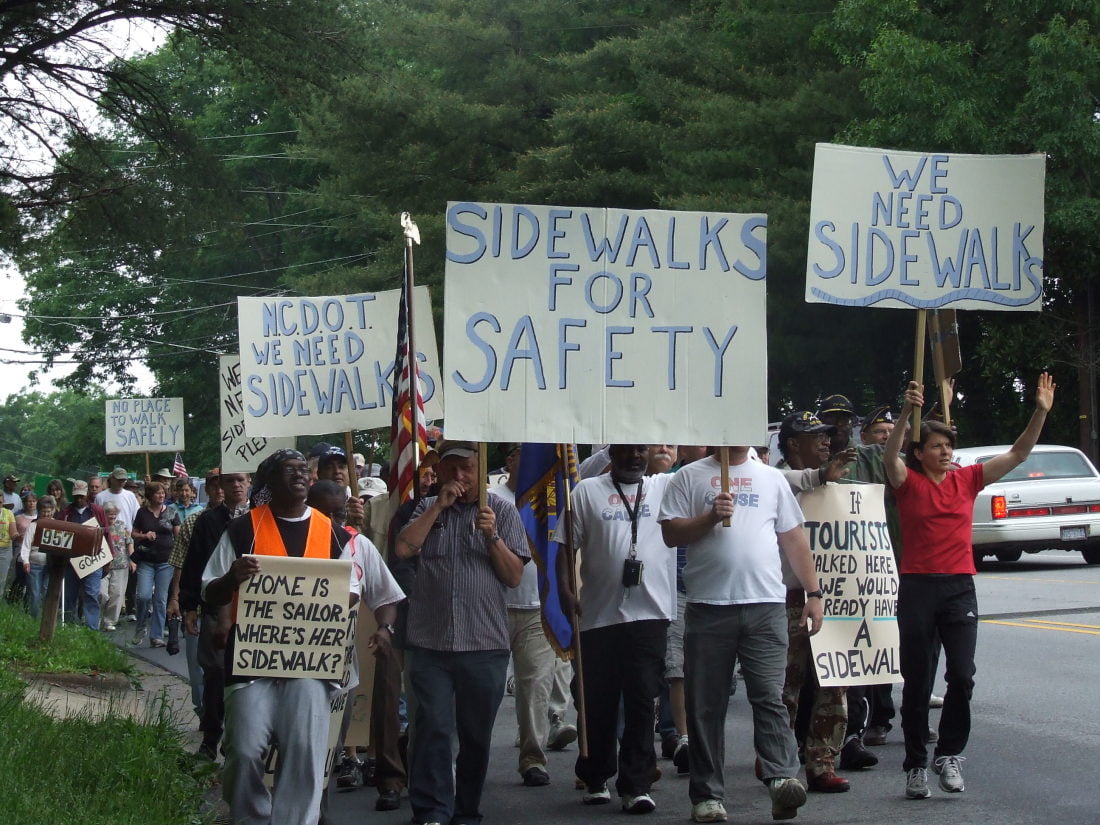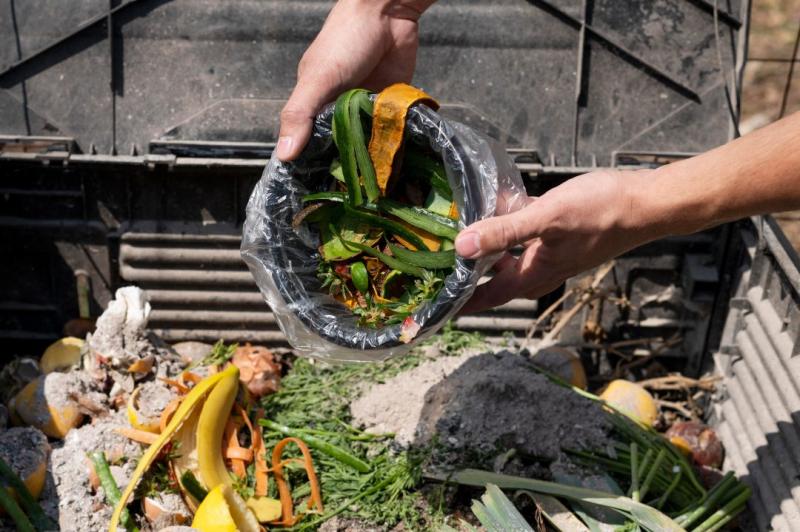City of Asheville releases Downtown Patton Avenue Corridor Feasibility Study, offering recommendations for the future safety and accessibility of primary downtown thoroughfare – The City of Asheville (.gov)

Report on the Downtown Patton Avenue Corridor Feasibility Study
Introduction: A Vision for Sustainable Urban Transformation
The City of Asheville has released the final report for the Downtown Patton Avenue Corridor Feasibility Study. The report presents a strategic vision to redevelop the corridor into a multimodal, pedestrian-centric gateway, directly aligning with the United Nations Sustainable Development Goals (SDGs). This initiative provides a phased roadmap for enhancing safety, economic vitality, and connectivity, contributing significantly to the creation of a sustainable and resilient urban environment as outlined in SDG 11 (Sustainable Cities and Communities). The plan is designed for cohesive integration with existing infrastructure and future projects, including the NCDOT I-26 Connector project, ensuring a holistic approach to sustainable urban planning.
The study’s recommendations are foundational to achieving a more livable and connected Asheville, reflecting a commitment to sustainable transportation, economic prosperity, and inclusive urban development for all residents and visitors.
Key Recommendations and Alignment with Sustainable Development Goals
The study outlines several key recommendations, each contributing to specific SDGs and fostering a comprehensive approach to sustainable development.
- Multimodal Infrastructure Improvements: By implementing a road diet, dedicated bicycle lanes, enhanced pedestrian crossings, and roundabouts, the plan directly addresses SDG 11.2 (provide access to safe, affordable, accessible and sustainable transport systems for all) and SDG 3.6 (halve the number of global deaths and injuries from road traffic accidents). These measures prioritize active transport and user safety.
- Public Transit Enhancements: Expanding bus stop infrastructure and improving transit connectivity promotes the use of public transportation, a key component of SDG 11.2, reducing reliance on private vehicles and lowering carbon emissions.
- Sustainable Land Use and Economic Growth: Recommendations for mixed-use development, form-based zoning, and pedestrian-oriented design support SDG 11.3 (enhance inclusive and sustainable urbanization) and SDG 8 (promote sustained, inclusive and sustainable economic growth). This approach fosters a vibrant, walkable corridor that supports local businesses and creates economic opportunities.
- Safety and Traffic Calming Measures: The integration of traffic calming features, improved lighting, and reconfigured intersections is a direct effort to improve public safety, contributing to SDG 11.2 and SDG 3 by reducing crash frequency and severity.
- Green Infrastructure and Climate Action: Increasing the tree canopy, adding green spaces, and incorporating stormwater management solutions advances SDG 13 (Climate Action) and SDG 11.7 (provide universal access to safe, inclusive and accessible, green and public spaces). This green infrastructure improves environmental performance, enhances user comfort, and builds resilience to climate change.
- Stakeholder Collaboration for Goal Implementation: The emphasis on continued collaboration with public officials, businesses, and community members embodies the principles of SDG 17 (Partnerships for the Goals), ensuring that the implementation process is inclusive, transparent, and aligned with community needs.
Stakeholder Engagement and Inclusive Planning (SDG 17)
Community engagement was a cornerstone of the study, reflecting a commitment to the participatory approach championed by SDG 17. A Project Working Group (PWG), comprising a diverse range of stakeholders, guided the study’s development.
Engagement Methods and Outcomes:
- Diverse Stakeholder Involvement: The PWG included staff from the City of Asheville and NCDOT, members of the French Broad River Metropolitan Planning Organization (FBRMPO), and representatives from neighborhoods, local businesses, and non-profits.
- Targeted Focus Groups: The project team engaged with a wide array of stakeholders through focus groups, including public service operators, community organizations, business associations, and property owners.
- Public Consultation: Two public meetings held in November 2023 and May 2024 provided a platform for gathering broad community feedback on design concepts and strategic considerations.
- Data-Informed Revisions: Feedback from these engagements directly informed the study’s final recommendations. Key insights that shaped the comprehensive vision include the integration of two roundabouts to improve traffic flow, the proposal for a new street connection to enhance connectivity, and the strategic straightening of Patton Avenue.
SDGs Addressed in the Article
The following Sustainable Development Goals (SDGs) are connected to the issues highlighted in the Downtown Patton Avenue Corridor Feasibility Study:
- SDG 3: Good Health and Well-being: The article’s strong emphasis on enhancing safety, particularly for pedestrians and cyclists, and reducing traffic accidents directly relates to promoting health and well-being.
- SDG 8: Decent Work and Economic Growth: The study aims to foster “economic vitality” and “economic growth” by improving accessibility and encouraging mixed-use development, which supports local businesses.
- SDG 9: Industry, Innovation, and Infrastructure: The project is fundamentally about developing sustainable and resilient infrastructure. It focuses on creating a “cohesive urban development with existing and future infrastructure projects” and enhancing “connectivity” through new road configurations.
- SDG 11: Sustainable Cities and Communities: This is the most prominent SDG in the article. The project’s vision is to transform a corridor into a “multimodal, pedestrian-friendly gateway” through sustainable urban planning, improved public transport, green infrastructure, and inclusive community engagement.
- SDG 13: Climate Action: The recommendation to incorporate “green infrastructure,” “increase tree canopy,” and implement “stormwater management solutions” addresses climate adaptation and resilience at the local level.
- SDG 17: Partnerships for the Goals: The article highlights the importance of “stakeholder collaboration” and describes a comprehensive engagement process involving public entities, private businesses, non-profits, and community members to achieve the project’s goals.
Specific SDG Targets Identified
Based on the article’s content, the following specific targets can be identified:
- SDG 3: Good Health and Well-being
- Target 3.6: Halve the number of global deaths and injuries from road traffic accidents. The study directly addresses this by recommending “safety and traffic calming measures” and designs “shown to reduce vehicle-related crashes and improve conditions for pedestrians and cyclists.”
- SDG 8: Decent Work and Economic Growth
- Target 8.3: Promote development-oriented policies that support productive activities… and encourage the growth of micro-, small- and medium-sized enterprises. The plan aims to support “local businesses” and foster “economic growth” by encouraging “mixed-use development and better accessibility.”
- SDG 9: Industry, Innovation, and Infrastructure
- Target 9.1: Develop quality, reliable, sustainable and resilient infrastructure… to support economic development and human well-being. The entire study is a roadmap for transforming Patton Avenue with multimodal infrastructure, including a “new street connection (Hilliard Ave Extension to Patton Ave) to improve connectivity.”
- SDG 11: Sustainable Cities and Communities
- Target 11.2: Provide access to safe, affordable, accessible and sustainable transport systems for all, improving road safety. This is a core objective, with recommendations for “dedicated bike lanes, enhanced pedestrian crossings,” expanded “public transit enhancements,” and roundabouts to improve safety for all users.
- Target 11.3: Enhance inclusive and sustainable urbanization and capacity for participatory, integrated and sustainable human settlement planning. The article emphasizes “sustainable urban development” and a participatory process involving a “Project Working Group,” “focus groups,” and “public meetings” to guide the plan.
- Target 11.7: Provide universal access to safe, inclusive and accessible, green and public spaces. The plan recommends “increasing tree canopy, adding green spaces, and incorporating stormwater management solutions,” which enhances the public realm and user comfort.
- SDG 13: Climate Action
- Target 13.1: Strengthen resilience and adaptive capacity to climate-related hazards and natural disasters. The inclusion of “green infrastructure” and “stormwater management solutions” directly contributes to building resilience against climate impacts like heavy rainfall.
- SDG 17: Partnerships for the Goals
- Target 17.17: Encourage and promote effective public, public-private and civil society partnerships. The article details extensive “stakeholder collaboration” with the City, NCDOT, an MPO, “neighborhood representatives, local businesses, and non-profits” to ensure successful implementation.
Indicators for Measuring Progress
The article mentions or implies several indicators that can be used to measure progress towards the identified targets:
- For Target 3.6: The “crash frequency and severity” is an explicit indicator mentioned in the article that can be tracked over time to measure improvements in road safety.
- For Target 8.3: The growth and vitality of “local businesses” within the corridor can serve as an indicator of economic progress resulting from the improvements.
- For Target 9.1: The completion of specific infrastructure projects, such as the “new street connection (Hilliard Ave Extension to Patton Ave)” and the implementation of “roundabouts,” serves as a direct indicator of progress.
- For Target 11.2: Measurable indicators include the mileage of “dedicated bike lanes” added, the number of “enhanced pedestrian crossings” installed, and an increase in public transit “ridership” following “bus stop infrastructure” expansion.
- For Target 11.3: The successful implementation of “mixed-use development” and “form-based zoning” policies are key indicators. The number of “public meetings” and “focus groups” held demonstrates the level of participatory planning.
- For Target 11.7: Progress can be measured by the percentage increase in “tree canopy” cover and the total area of new “green spaces” created along the corridor.
- For Target 13.1: The implementation and capacity of “stormwater management solutions” can be measured to track enhanced climate resilience.
- For Target 17.17: The number and diversity of partners in the “Project Working Group” (PWG) and the continued engagement of “public officials, local businesses and community members” are indicators of a successful partnership.
Summary of SDGs, Targets, and Indicators
| SDGs | Targets | Indicators Identified in the Article |
|---|---|---|
| SDG 3: Good Health and Well-being | 3.6: Halve deaths and injuries from road traffic accidents. | Reduction in “crash frequency and severity.” |
| SDG 8: Decent Work and Economic Growth | 8.3: Promote policies to support small- and medium-sized enterprises. | Economic growth and support for “local businesses.” |
| SDG 9: Industry, Innovation, and Infrastructure | 9.1: Develop quality, reliable, sustainable and resilient infrastructure. | Implementation of “roundabouts” and a “new street connection.” |
| SDG 11: Sustainable Cities and Communities | 11.2: Provide access to safe, affordable, accessible and sustainable transport systems. | Implementation of “dedicated bike lanes,” “enhanced pedestrian crossings,” and increased transit “ridership.” |
| 11.3: Enhance inclusive and sustainable urbanization and participatory planning. | Implementation of “mixed-use development”; number of “public meetings” and “focus groups” held. | |
| 11.7: Provide universal access to safe, inclusive and accessible, green and public spaces. | Increase in “tree canopy” and area of “green spaces.” | |
| SDG 13: Climate Action | 13.1: Strengthen resilience and adaptive capacity to climate-related hazards. | Implementation of “stormwater management solutions.” |
| SDG 17: Partnerships for the Goals | 17.17: Encourage effective public, public-private and civil society partnerships. | Continued collaboration with the “Project Working Group (PWG),” businesses, and community members. |
Source: ashevillenc.gov

What is Your Reaction?
 Like
0
Like
0
 Dislike
0
Dislike
0
 Love
0
Love
0
 Funny
0
Funny
0
 Angry
0
Angry
0
 Sad
0
Sad
0
 Wow
0
Wow
0









































































